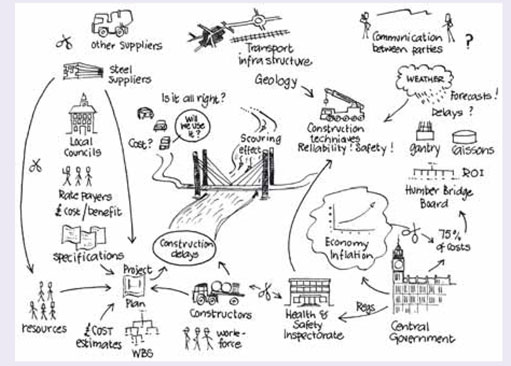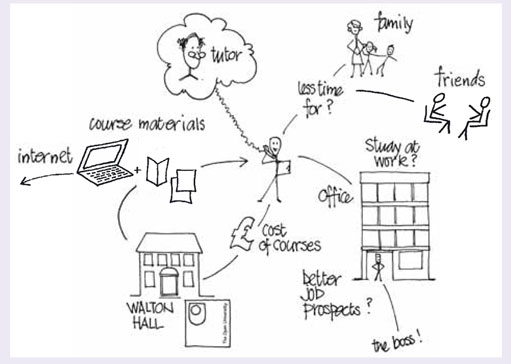2.1 The feasibility study
A team should be designated to undertake a feasibility study for any proposal that appears to be worth accepting. This study should attempt to generate scenarios which are potentially acceptable solutions. The resulting scenarios – different versions of what might be done – and all objectives that are to be addressed by the study should be used to prepare a functional specification that identifies what has to be done and what constraints apply to doing it. It ensures that there is at least one satisfactory way of doing it, but it does not specify how the objective is to be achieved. That step occurs as part of the project planning, if the proposal is accepted and authorised by management. A functional specification is related to a business case since it is a refinement of a proposal’s scope, objectives and financial and time constraints, and addresses the questions of technical and economic feasibility.
Assessing the feasibility of a proposed scenario requires an understanding of the political, economic, social, technological, legal and environmental (PESTLE) factors involved. Note that the financial and technical aspects – the ‘hard’, quantifiable aspects – are only part of the problem to be analysed. The other factors are ‘soft’. The soft systems methodology (SSM) is an approach that deals with information beyond the ‘hard’ information of quantities and facts. Checkland (1981) defined the SSM after research into the Concorde project, which led to the development of a supersonic passenger aircraft. The SSM can be used early in a study to identify the interactions that need to be considered in any assessment. It is particularly useful for identifying those aspects of any problem or proposal that fall outside normal operations research and ‘engineering’ concerns with function, construction and operation (see, for example, Checkland and Scholes, 1990). A particular technique employed by the SSM that is useful in feasibility studies is rich picture analysis. This is an analyst’s holistic (describing the situation as a whole) representation of a situation: it identifies problem areas, structures, processes and political, psychological and social factors. Financial, technical or regulatory constraints can also be captured in the picture. Figure 5 is a rich picture of the project to construct the bridge over the river Humber.

Activity 6
Sketch a quick rich picture of your ‘project’ to study. Include all the elements you think affect you and your project, or that your project has an effect on.
Discussion
Your picture will, of course, be unique to you. But you probably have included your job, your boss(es), partner and other family members if you have them, and your costs of studying, as we have in our picture (Figure 6). Perhaps you have pictured how it affects your living arrangements, and what strains and stresses (or benefits!) it gives to your social life.
Generating acceptable scenarios
In the context of defining a project, a scenario is a brief description of a system, process or set of procedures that should meet the identified objectives. As noted above, for every objective there are a number of possible strategies – the objective of eating can be satisfied by: assembling raw food in a salad; assembling and preparing ingredients for a cooked meal at home; going to a friend’s for a meal; going to a café or restaurant; or getting a meal to take away. Each of these would be a possible scenario for satisfying a need to eat. Developing scenarios is an activity in which brainstorming can again play a role. Many ideas can be generated, but then must be looked at critically, and modified, selected or rejected.
Activity 7
Make a brief list of possible scenarios to meet the need to move people and their baggage around a large site like a major airport. Brainstorm on your own if you like, or ask friends or colleagues to join in.
Discussion
Some possible scenarios are:
- provide wide pavements, stairs, road crossings, etc., with baggage carts allowing the movement of people on foot, pushing carts containing their baggage
- provide moving belts (travelators), escalators and lifts, and baggage carts for movement on foot, as above
- provide individual electric carts in which one to four people can load their baggage and drive themselves or be driven by a hired driver around the site
- provide petrol-or diesel-driven buses with baggage racks to move groups of people and their baggage around the site
- provide a fixed roadbed or rail system of automatically controlled cars or wagons in which groups of people and their baggage can be moved around the site (e.g. a monorail, a form of small train or tram, or similar).
The scenarios above describe current ways of transporting people and baggage at major airports. At some later point, you may be expected to refine the scenarios. For example, should an airport charge people to use the powered carts? Brainstorming may generate some more far-fetched or off-the-wall ideas:
- provide booths to teleport people and baggage from one place to another by converting them into pure energy which can be beamed at the speed of light
- provide anti-gravity discs of, say, 1.5 metres diameter upon which one to three people and their baggage can stand; the discs then move under automatic control.
You may have thought of other possible scenarios.
We have included far-fetched ideas in our discussion of this activity to show briefly how an idea which may appear so far-fetched as to be silly can be modified to use an existing or emerging technology. Look at the second of our far-fetched ideas. Anti-gravity is, at best, a very long way from achieving reality. However, it is possible to use the technology of superconductors to lift a weight and then to move it using linear electric motors; this is an emerging technology currently being explored for its application to public transport. While it may still seem far-fetched, such a technology may in future be used to lift a disc on which people and their baggage stand and to move the disc and its burden under automatic control around a site such as an airport.
SAQ 4
What is the role of a scenario and how is a scenario developed?
Answer
The purpose of a scenario is to provide a general statement of an idea of what is involved in order to meet an objective. This provides a basis for subsequent assessment. Scenarios are developed from ideas, by any method for generating ideas and selecting those that are possible or reasonable.

